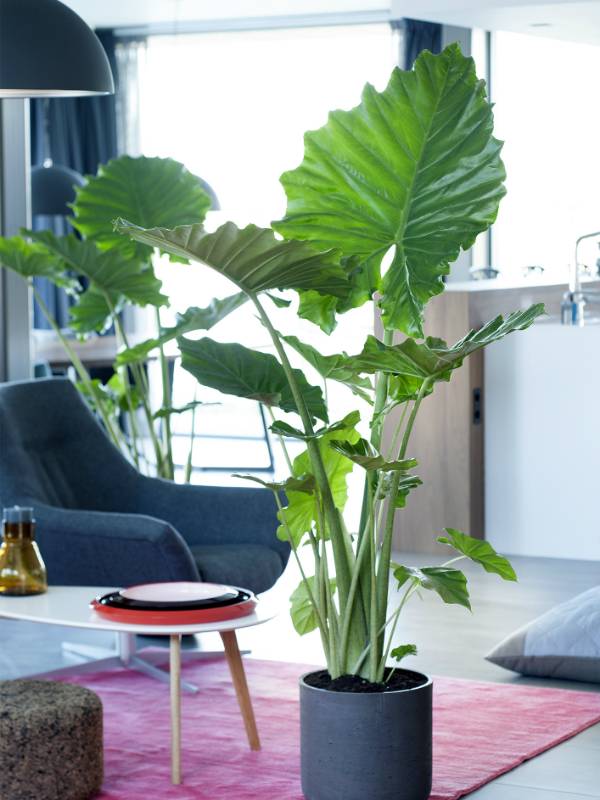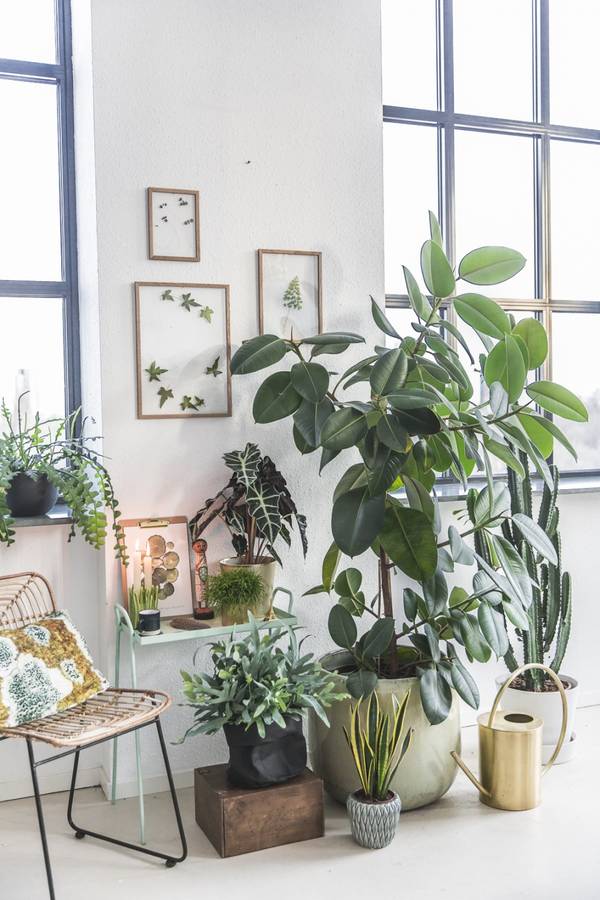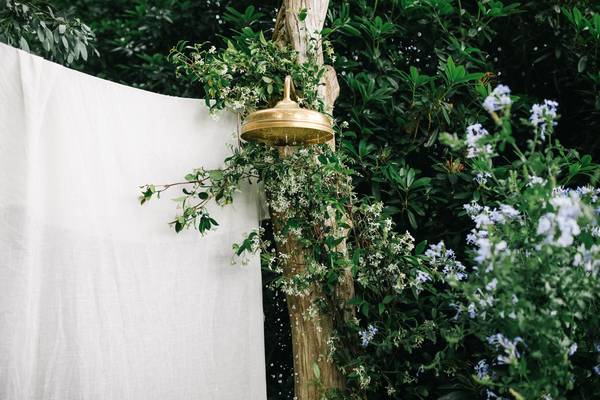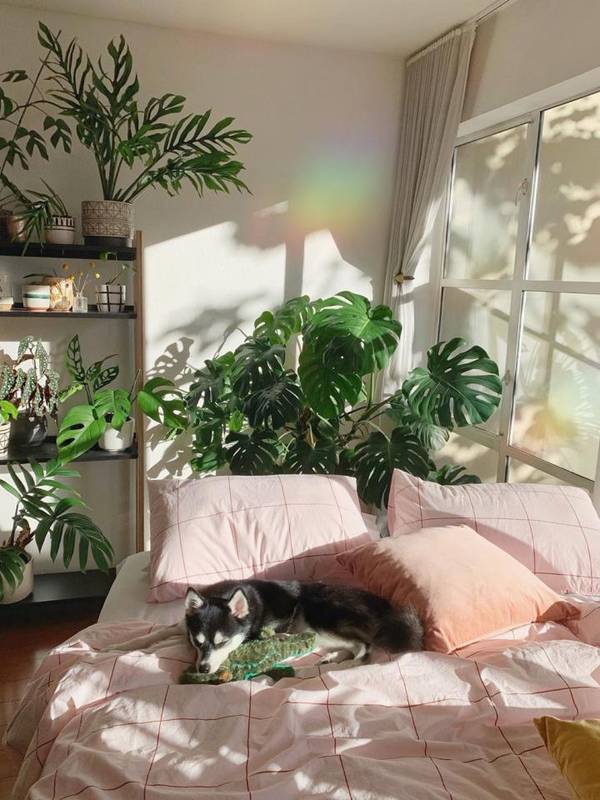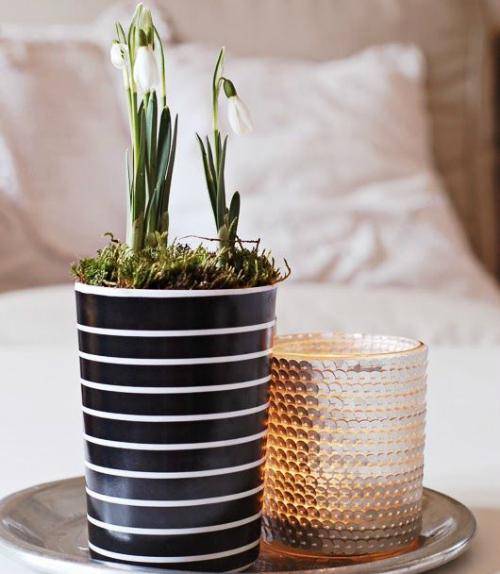
Care
- Alocasia likes rainforest conditions: warm and damp, but not in full sun.
- The leaves turn towards the light, so rotate regularly to prevent the plant from growing crooked.
- Water regularly. The soil should not be allowed to dry out.
- The plant hibernates in winter, and needs less water.
- If it’s overwatered, Alocasia ‘sweats out’ excess moisture, and a drop can appear on the tip of the leaf. This is called ‘guttation’ and will disappear if you reduce the amount of water you give.
- Alocasia enjoys the odd shower, so give it some 'rain' under your bathroom shower, or pop it outside under warm summer rain.
- Give plant food once a fortnight in spring and summer.
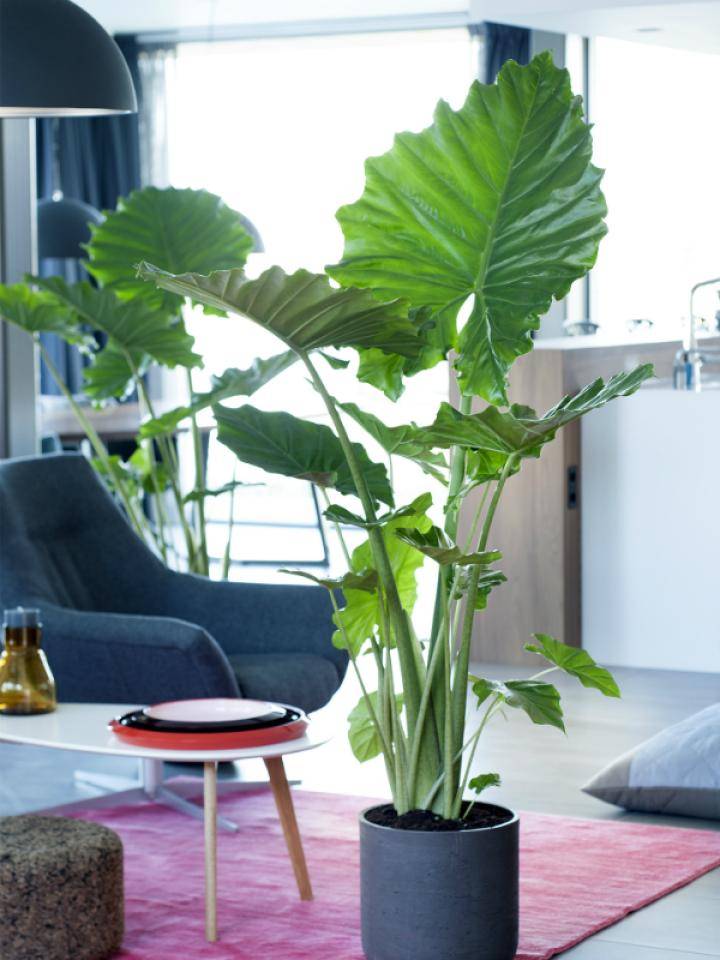
Colours and shapes
Alocasia, also known as elephant’s ear, has large, beautifully patterend leaves. Despite the fact that it’s a sizeable plant, it still look airy and elegant thanks to the tall, smooth stems that grow out of a tuber. Those stems can be plain, but can also have tiger stripes, and the leaf is equally remarkable. There is a species with leaves that resemble African masks, one with crinkled leaf edges, and one that’s called the skeleton plant because the leaf veins are clearly marked. The flower (in the form of a spike) is not particularly impressive with this houseplant. The decorative value lies particularly in the magnificent foliage.
Origin
Alocasia is a member of the Arum family and grows in the tropical rainforests of South-East Asia. It’s particularly common on Borneo, and can reach a height of four metres. There are 79 known species. The plant has been cultivated around the Equator as a foodstuff for 28,000 years. Decorative plants have been bred from the original versions. These aren’t edible, but they are very beautiful. Alocasia conquered living rooms in the 1950s, and has a great vintage vibe.
Symbolism
Alocasia is ‘the tree that grows up to the heavens’ and is said to be the plant in all the Western and Eastern versions of the fairytale of Jack and the Beanstalk. It thereby stands for seizing opportunities when they arise, even when they’re risky.
